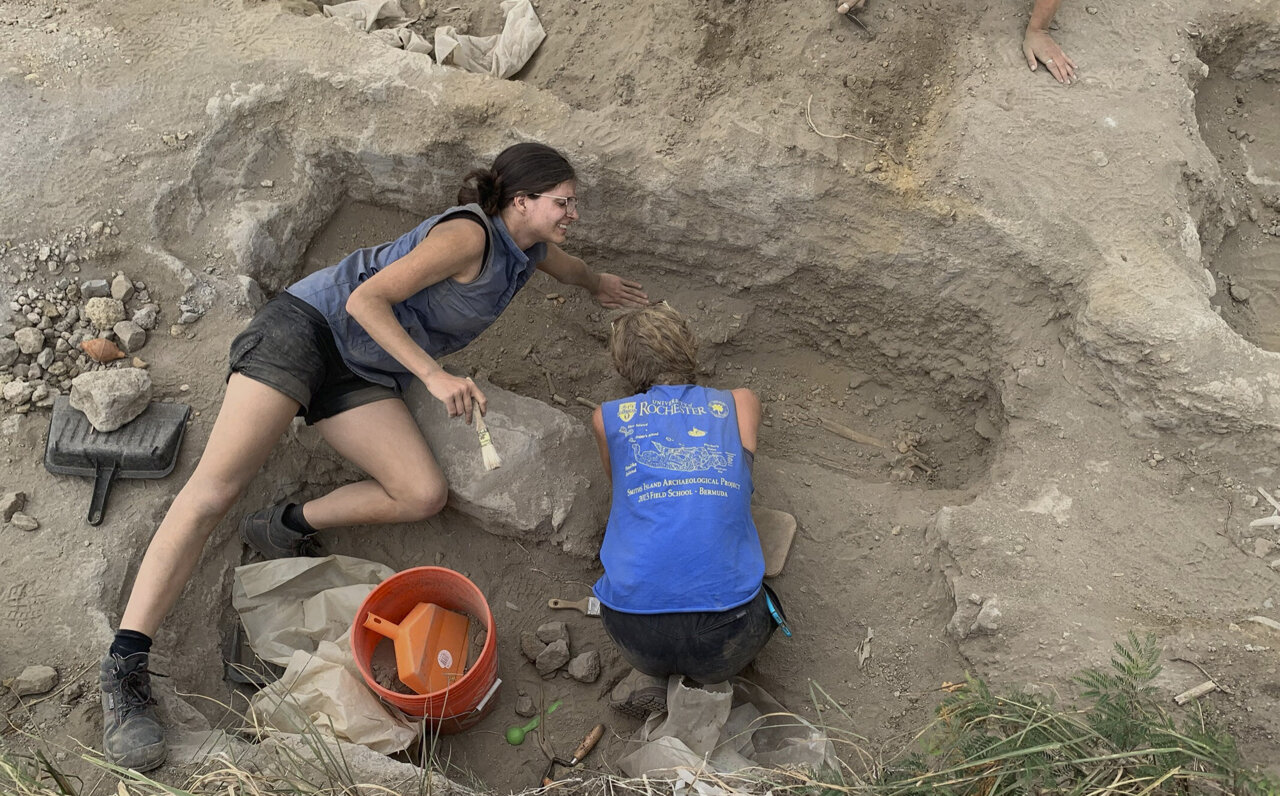Archaeologists were working on an area needed for expansion of an airport when they discovered an 18th-century burial ground at a former sugar plantation on the Dutch Caribbean island of St. Eustatius, AP reports. The burial ground at the former Golden Rock Plantation most likely contains the remains of enslaved people, officials said Monday, adding that the site could provide a better understanding of how enslaved people in the Caribbean lived.
So far, 48 skeletons have been found at the site, with most being males and the rest females and infants. Authorities said there could be more.
“We are predicting that the number of individuals buried here will surpass the burial site discovered at Newton Plantation on Barbados, where 104 enslaved Africans were excavated. This is one of the largest sites of its kind ever discovered in the Caribbean,” said Alexandre Hinton, the director of the St. Eustatius Center for Archaeological Research.
Commenting on the site likely containing the remains of enslaved people, Hinton said: “Initial analysis indicates that these are people of African descent.”
“To date, we have found two individuals with dental modification that is a West African custom. Typically plantation owners did not allow enslaved persons to do this. These individuals are thus most likely first-generation enslaved people who were shipped to St. Eustatius,” she said.
Items found at the burial ground include coffin nails, remnants of coffins, and objects such as beads and ceramic plates that were buried with the people. A coin from 1737 depicting King George II of England was also found.
St. Eustatius in the northeastern part of the Caribbean was colonized by the Dutch in 1636. It was an important transit port for the regional trade in sugar and slaves from West Africa, according to AP.
Experts are now set to examine the remains found at the graveyard on the Dutch Caribbean island to know more about the lives of those buried. Leiden University in the Netherlands will conduct “stable isotope analysis” to figure out the diets of the buried individuals and to know whether they were born on the island, Hinton said. DNA analysis to establish where they come from will be done by Harvard while England’s Northumbria University will conduct protein studies to find out what diseases they might have suffered, Hinton added.
Here are photos of the 18th-century graveyard:




During the horrifying slave trade, Africans were captured and forced onto ships to be sold into bondage in the Caribbean, parts of Europe and the United States of America, experiencing some of the worst treatments ever.










